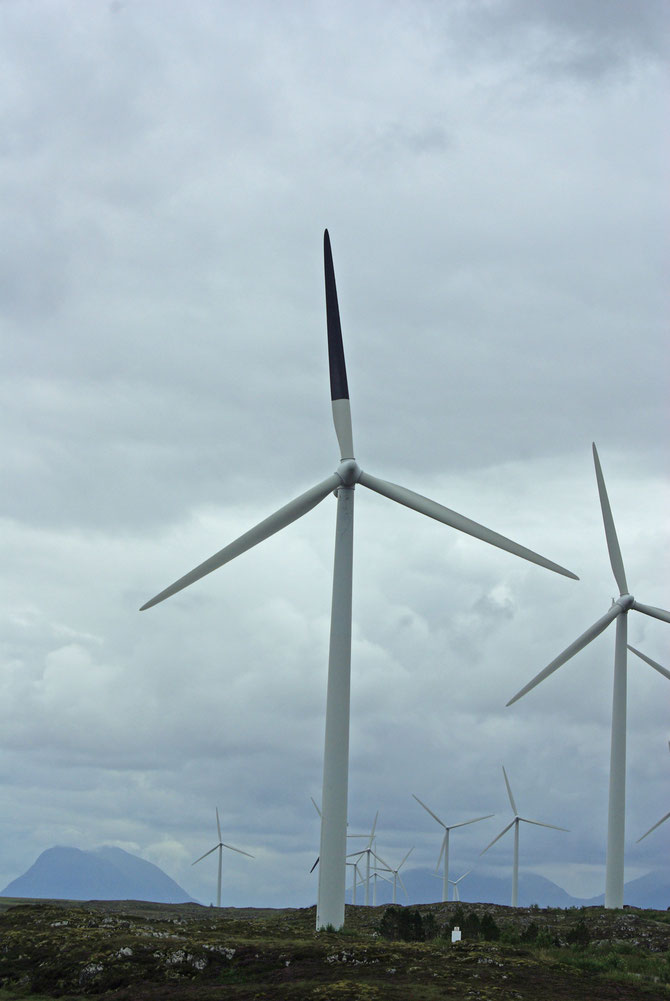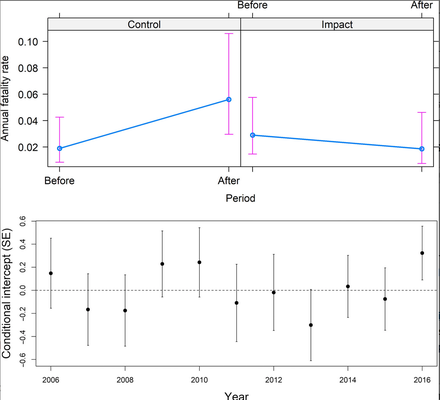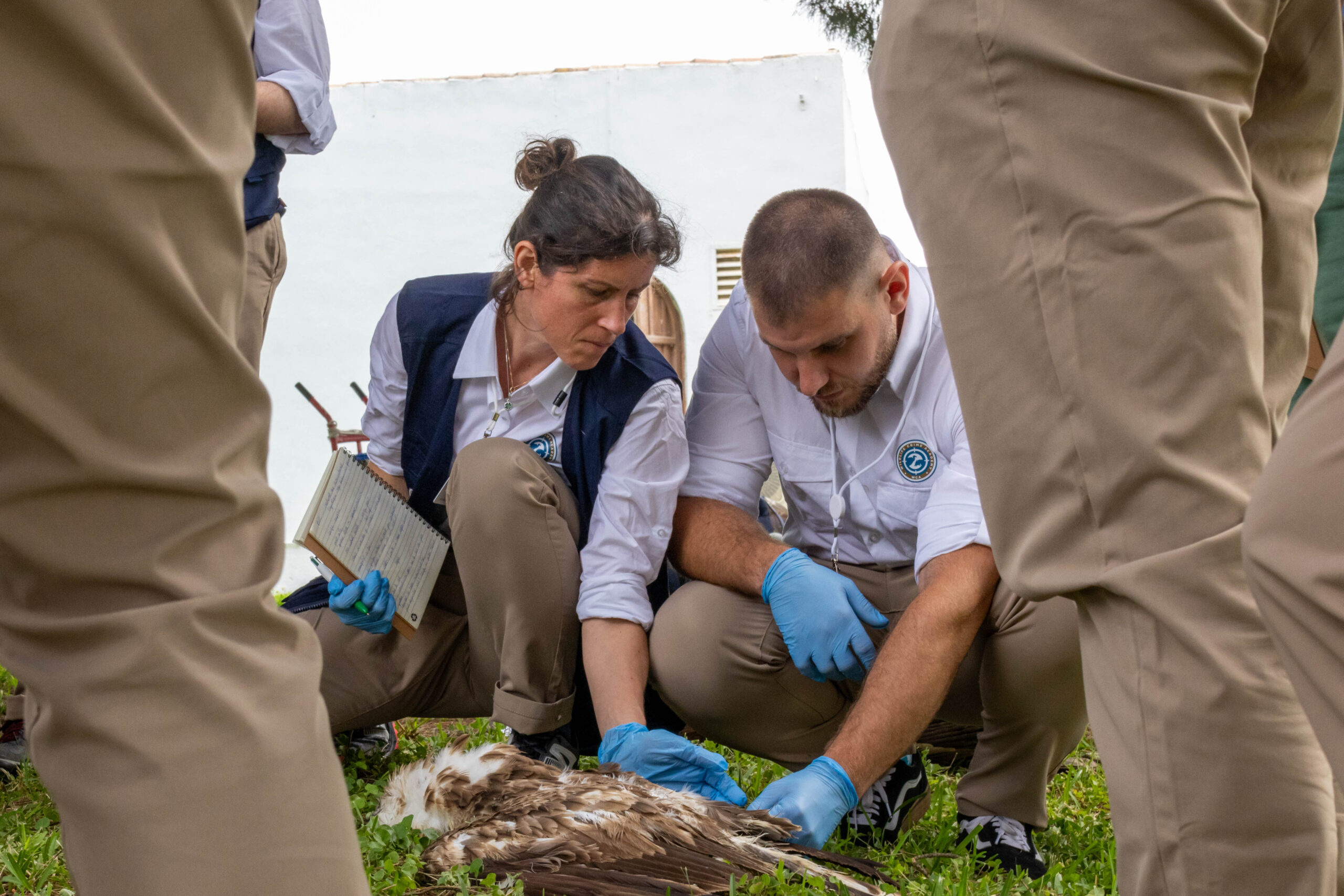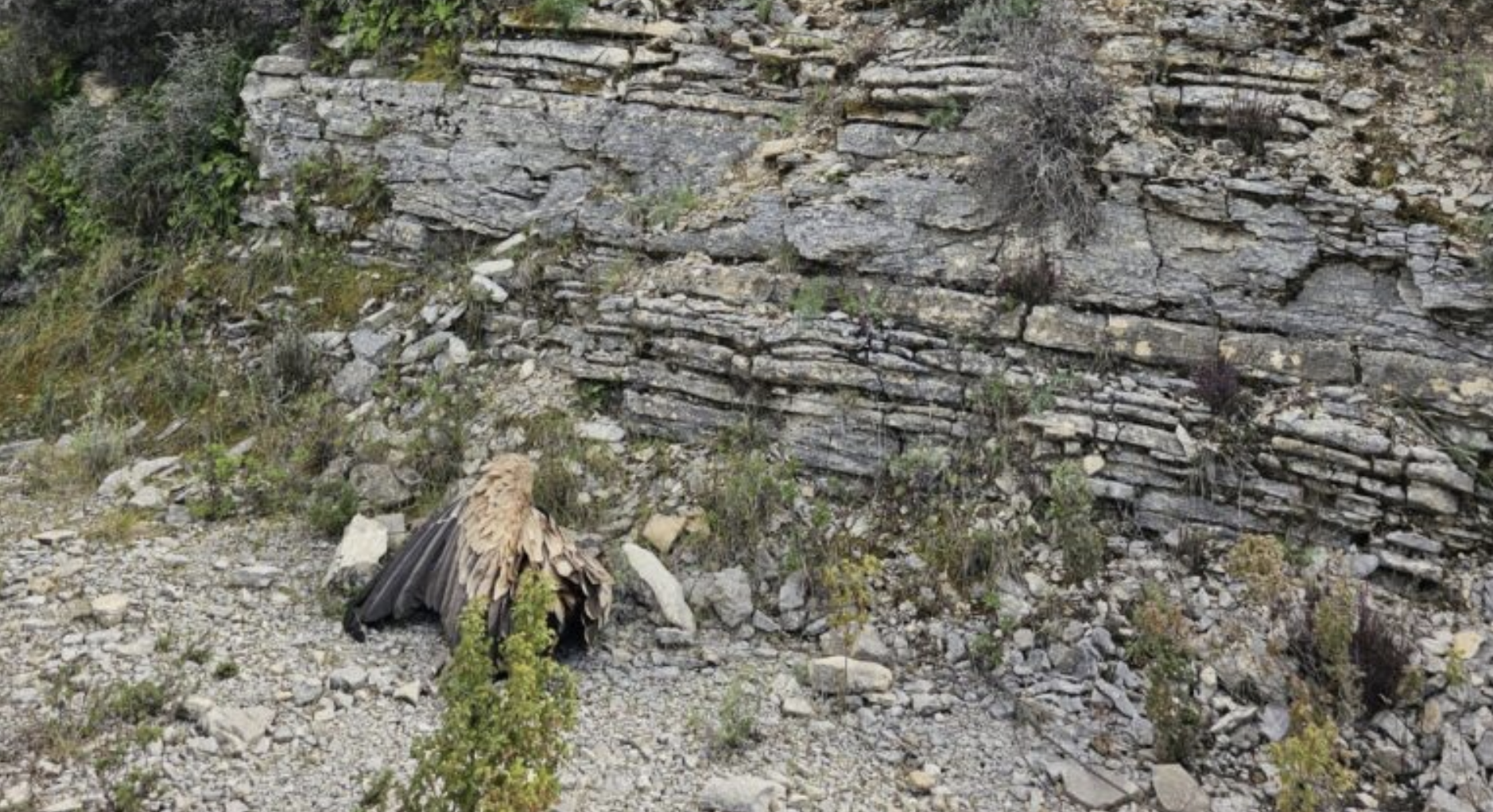
A recently published research article finally provides evidence that painting a single wind turbine blade black reduces collision by 70%, and is particularly effective for large birds of prey, and therefore probably also vultures. The paper was published in Ecology and Evolution by researchers from the Norwegian Institute for Nature Research, Norway, and the Lake Ånnsjön Bird Observatory, Duved, Sweden.
Overview
The climate change crisis has promoted the innovation and development of renewable energy sources globally, with the wind-power energy sector exponentially growing. However, as the scope and scale of wind power plants increases, wildlife and habitats suffer. Birds, in particular, cannot easily see the wind turbines blades, mostly when in motion, which can lead to collision and subsequently, mortality. Although this is a growing threat, there are very few effective deterrent or mitigation measures already developed to reduce the risk of collisions, including selective shutdown along a migratory flyway for soaring birds and tilling the soil around the tower base. Both these measures, however, come at a cost, either through revenue loss or annual habitat management, respectively. Therefore, a practical and functional measure will prove vital in reducing bird-related mortality with wind energy production, as it can be potentially industrialized and implemented without delays. A proposed measure to achieve this was painting one wind turbine blade black to increase visibility. However, there was no concrete evidence that this method was effective until now.
Method
The study took place in the Smøla wind‐power plant, situated on the northwest side of the main island of Smøla, which is an archipelago located off the coast of Møre & Romsdal County, Central Norway. It was built in two phases — the first phase consisting of twenty 2.1 MW turbines finished in September 2002, while the second phase incorporated an additional 48 2.3 MW turbines by August 2005. In August 2013, one of three rotor blades were painted black at four of the 2.1 MW turbines with previously recorded carcasses. Neighbouring turbines, also with previously recorded carcasses, were defined as control turbines (i.e. not painted) for fatality searches. The researchers then compared painted with control turbines before and after treatment with an extensive and long‐term baseline data available from regular fatality searches using trained dogs from the beginning of 2006 until the end of 2016, rendering seven and a half years before and three and a half years after treatment. The researchers performed a statistical analysis to test for effects of rotor blade painting on annual fatality rates, before and after painting following a before-after-control- impact (BACI) approach.
Results
At the eight study turbines, a total of 1,275 individual turbine searches have been performed in the period of 2006–2016, during which 82 carcasses were found (including 40 willow ptarmigan not included in the study). The results indicated that the number of recorded carcasses increased at the control turbines (7 vs. 18) while they decreased at the treated turbines (11 vs. 6). Furthermore, the study found no effect on birds having a higher probability of collision at the neighbouring control turbines due to painting. Overall, the annual fatality rate decreased by an average 71.9% at the turbines with a painted blade, relative to the neighbouring control turbines. The treatment had the largest effect on reduction of raptor fatalities, with no white‐tailed eagle carcasses recorded after painting the blades.
Recommendations
This study is a great first step in providing a small-cost and effective solution to tackle bird collisions with wind turbines. The study should be either replicated, preferably with more treated turbines, or carried out at new sites to ensure the outcomes are generic at multiple settings. Collision with energy infrastructure poses a significant threat to soaring birds like vultures, with the latest known victims dying from a collision with wind turbines in Spain a couple of weeks ago. It is essential to find suitable solutions and promote sustainable development between the growing wind energy sector through targeted experiments to mitigate impacts on birds successfully.
Source
May, R., Nygård, T., Falkdalen, U., Åström, J., Hamre, Ø., & Stokke, B. (2020). Paint it black: Efficacy of increased wind turbine rotor blade visibility to reduce avian fatalities. Ecology And Evolution. doi: 10.1002/ece3.6592
Sign up to our newsletter to stay tuned with Europe’s vulture species





